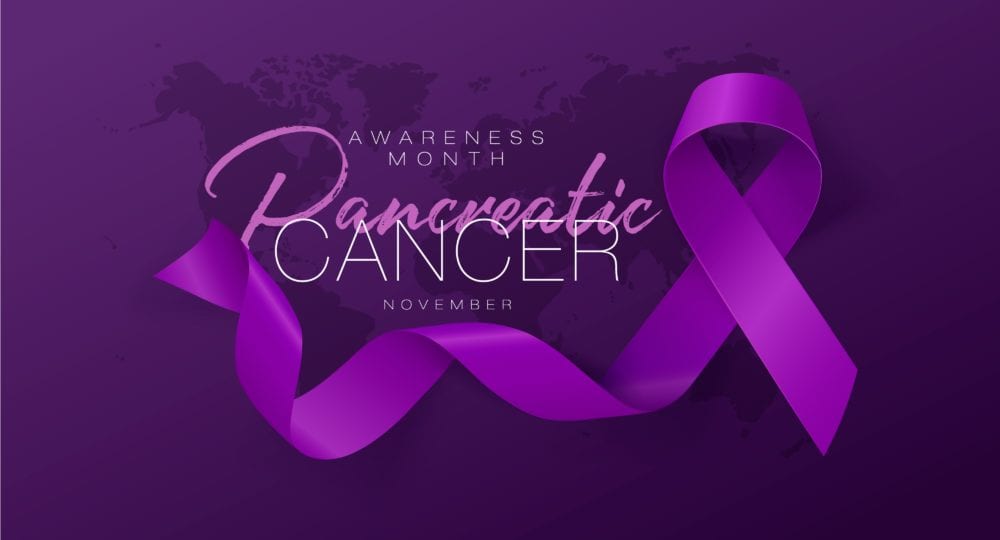More than 56,000 Americans will be diagnosed with pancreatic cancer this year, according to Pancreatic Cancer Action Network; they go on to state it is the 9th most common cancer in women and 10th in men. With so many newly diagnosed cases every year, facing pancreatic cancer can be daunting for both the patient and the caregiver.
Before we talk about the different types of pancreatic cancer and living with the diagnosis, what exactly is pancreatic cancer and how is it diagnosed? The pancreas, like all organs, is made up of cells; normally the process of cells is this: they divide to form new cells as needed by the body, when they age and become older they die, and in their place new cells will form. When this process breaks down, either new cells will form when they’re not needed by the body, or old cells do not die when they’re supposed to. Because of this, extra cells could form a mass; the tissue from this formation is called a tumor. While some tumors are benign, malignant tumors can grow and spread to other tissues and organs around them.
Depending on the specific cell they begin in, pancreatic tumors can be either neuroendocrine or exocrine in nature; knowing the origin of the tumor plays a key role in types of treatment and response. The majority of pancreatic cancers are adenocarcinoma, while around 7% are neuroendocrine tumors. Diagnosing pancreatic cancer, because of the location of the organ, is sometimes difficult, particularly since it’s usually not palpated during a physical exam. For this reason, unfortunately, many cases are not found until later stages in the disease process. Imaging, such as CT scans, MRI’s, or endoscopic ultrasound (EUS) are most often used in the diagnostic process, along with biopsy of the tissue once suspected.
The Pancreatic Cancer Action Network has published the following:
Pancreatic Cancer: 16 Warning Signs You Should Know:
Symptoms:
- Abdominal or mid-back pain
- Loss of appetite
- Jaundice
- Weight loss
- Nausea
- Change in stool
- Recent onset of diabetes
Risk Factors:
- Family History
- Diet
- Obesity
- Race
- Smoking
- Gender
- Age
- Diabetes
- Pancreatitis
Once the diagnosis has been made, living with pancreatic cancer can affect many areas of the life of the patient, as well as the caregiver. Two of the biggest areas of management are supportive care and diet and nutrition. There is a common misconception that supportive care is only for patients who are diagnosed with end-stage disease, but on the contrary, supportive care recognizes the physical, emotional, social, spiritual, and practical needs of every patient dealing with this cancer. No two patients are alike, and supportive care is fitting at any time after diagnosis and for every patient.
Diet and nutrition play a big part in maintaining the quality of life in all patients. Every patient’s journey is different, and depending on the treatment recommended, diet and nutrition could affect the response to cancer-directed surgeries and other treatment modalities. A big factor in the pancreatic cancer patient’s diet is pancreatic enzymes and its correlation to digestive issues. Working closing with a cancer expert in diet and nutrition can be invaluable, especially when addressing these concerns as well as knowing which foods are less likely to aggravate unpleasant side effects.
For more information on pancreatic cancer, you can visit: www.pancan.org. To get involved with Project Purple, an impact-driven organization with a vision of a world without pancreatic cancer, go to: www.projectpurple.org.
Together, through education, support, and research, we can make improvements in the lives of those living with pancreatic cancer.





